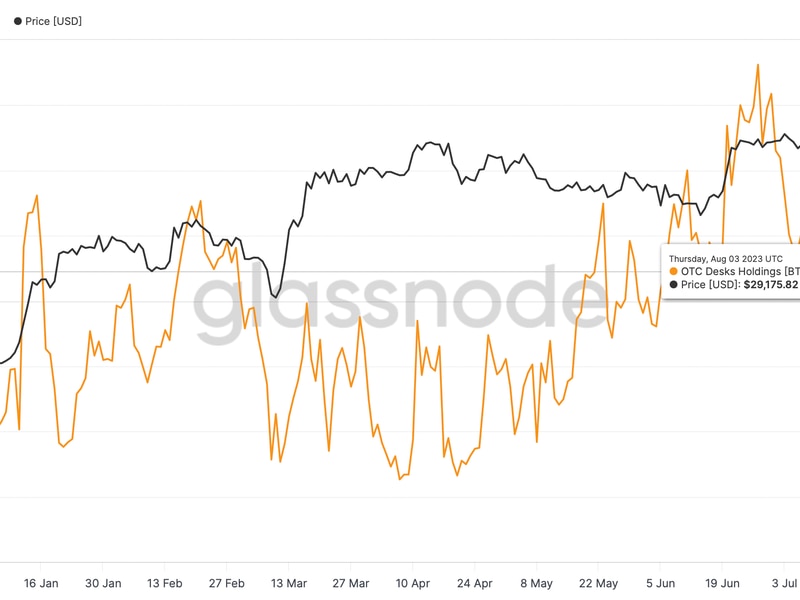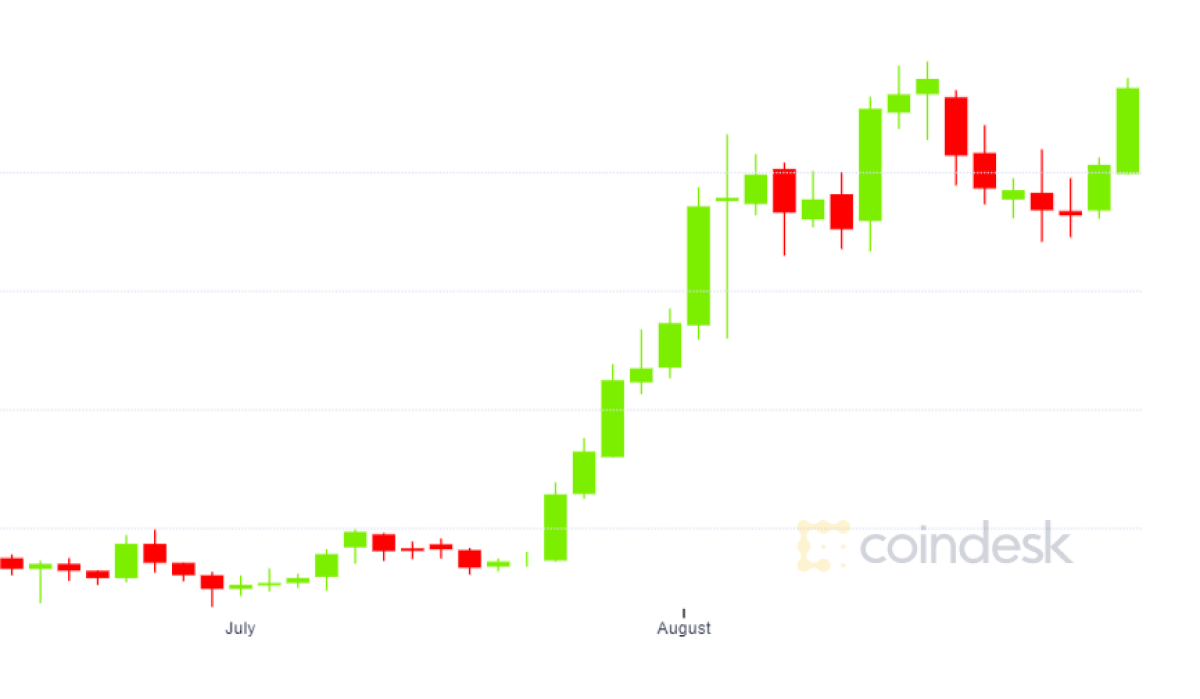The Case for Bitcoin Banking (Despite Cred’s Bankruptcy)
The Case for Bitcoin Banking (Despite Cred’s Bankruptcy)
The crypto lender Cred recently filed for bankruptcy, after apparently suffering significant losses in its loan portfolio. While the final details of the insolvency have yet to be determined, the postmortems have already begun to roll in. A number of Bitcoiners have used the occasion to reinforce that eternal doctrine: not your keys, not your coins. And indeed, this is an idea that I am sympathetic to. True ownership of bitcoin requires knowledge of a private key which allows you to spend the UTXOs in question.
But it is also naive to believe that Bitcoin credit will cease to exist following the failure of this intermediary. Credit is a natural phenomenon that emerges in every stable society. It is merely codified promise-making. When promises can be rendered enforceable through laws and contracts, credit can emerge. And credit permits society’s idle resources to be allocated to firms and entrepreneurs who can more effectively put them to use. It is only in truly broken societies that credit does not exist. In Venezuela, for instance, long-term lending is virtually impossible because the currency these loans would be denominated in is too unpredictable. Hence lenders cannot have any assurance they would get a return in real terms. Property must be bought in cash, structurally limiting the vibrancy of the real estate market.
CoinDesk columnist Nic Carter is partner at Castle Island Ventures, a public blockchain-focused venture fund based in Cambridge, Mass. He is also the cofounder of Coin Metrics, a blockchain analytics startup. Disclosure: Castle Island Ventures is an investor in BlockFi, a crypto brokerage and wealth management platform.
In the wake of Cred’s failure, I have seen calls to terminate all bitcoin banking, and for crypto lenders to prove the existence of reserves. This misses the point somewhat: while more transparency into reserve or liquidity ratios would be welcome, these lenders are actively bundling up user deposits and issuing loans. The guarantees associated with a fully reserved institution (like a custodian) is simply not possible with a lender, as auditing a portfolio of loans is a different and more complex activity than simply demonstrating ownership of some units of cryptocurrency. There is no way to fully mitigate the risk of default, nor should there be: interest is compensation for taking on risk. If someone offers you risk-free interest, something is wrong.
As a reminder, conventional commercial banks do not hold everyone’s dollars in their vaults and magically generate interest. They create loans, pass on a portion of the interest generated to depositors, and maintain a reserve with which to honor withdrawals. The traditional business of banking involves financing long-term projects for a return while offering depositors short term liquidity, should they need it. Because there is a difference in the maturity of the deposits (instant) and the loans (long-term), this is referred to as maturity transformation. This is the true alchemy of capital, taking savings and transforming them into productive capital deployed into the economy.
Crypto lending involves less maturity transformation – since few businesses desire a long-term liability denominated in Bitcoin, a fundamentally deflationary asset – and has more in common with securities lending. Consumers of crypto credit include firms with Bitcoin-denominated liquidity requirements and a desire for leverage, like market makers, proprietary trading firms, arbitrage funds, and businesses with large Bitcoin inventory demands like exchanges (which may not want to dip into their cold storage to honor withdrawals) or Bitcoin ATM companies. Miners, who do have Bitcoin-denominated cash flows, are also occasional consumers of Bitcoin credit. In a June 2019 blog post, BlockFi (a Cred competitor) lists the types of companies participating in crypto lending: “70% Market Makers, 25% Funds, and 5% Exchanges.”
Credit in this market has positive, but hard-to-observe effects. Market makers keep exchanges in line with each other and enable tight spreads. It is these market makers who take the other side of your market buys and ensure you don’t face too much slippage. Funds borrowing for short selling purposes have an incentive to surface information and incorporate it into price. Funds taking out loans to trade the Grayscale Bitcoin Trust (GBTC) instrument continually force down the premium and render it more efficient for retail investors. If you’ve ever used a spot or derivative exchange, or a financial Bitcoin product, you have probably benefited from the existence of crypto-native credit.
Elsewhere, in our current negative interest rate regime, banking is a fundamentally unprofitable activity. The Federal Reserve’s increasingly desperate interventions into the economy via the blunt instrument of interest rates have squeezed businesses with net interest margin business models. This has led to a wave of consolidation across the bank sector over the last 30 years. Since 1990, the number of chartered banking institutions has declined in the United States by 10,092, or 67 percent, according to BankingStrategist. This consolidation has driven up the average size of banks, with adverse outcomes. Community banks have suffered while megabanks have gained market share. Because smaller banks generally lend to smaller businesses, this consolidation has caused credit to become more scarce for the firms that need it. Meanwhile, the Federal Reserve is lowering the cost of capital for the hyper-liquid Apple (and other well-financed corporations) by buying its bonds on the secondary market.
The crypto industry offers a refreshing alternative to this increasingly stagnant banking system. Forward-thinking legislators in Wyoming have shown great initiative by creating a new kind of bank charter, the Special Purpose Depository Institution. Already, two crypto companies – Kraken Financial and Caitlin Long’s Avanti – have obtained the SPDI charter. This will permit them to operate as full-reserve banks, linking Bitcoin and the federal reserve payments system. Additionally, interest rates for Bitcoin, Ether, and stablecoins are structurally high, due to a relentless demand for credit in a fast-growing and under-provisioned industry.
The high interest rates act as a gravity well, sucking in commercial bank dollars and causing them to be converted into crypto-native stablecoin liquidity. A number of providers like Dharma, Linen, and Voluto, among others, are now instrumentalizing these stablecoin yields and creating alternative, consumer-facing lending products with a UX that rivals popular fintechs. While bank indexes globally keep plunging and interest rates for depositors are negative in real terms, crypto banking is showing immense growth and vigor, and maintaining high yields despite cyclical slowdowns in subsectors like DeFi.
Proof-of-reserves
I am aware that any Rothbardians credit skeptics will be reading this with concern, tending to prefer fully reserved banking models. But there are good reasons to believe that a banking system built atop Bitcoin would be more resistant to the failures of both the fiat system, and the gold-based system that came before. Bitcoin banks distinguish themselves in a few key ways.
First, Bitcoin, as a natively digital asset, is inherently auditable. This means that I can prove to a third party that I own some Bitcoin, and they to me. For deposit-taking institutions, this manifests as Proofs of Reserve (PoR). However, PoR is most salient and helpful for full reserve institutions, where a simple accounting of assets and liabilities can suffice. For institutions engaged in lending, a related proof can be used to facilitate a transparent reserve or liquidity ratio. Not to a financial regulator, but to the general public and to its depositors. I would envision a world where end users can freely choose between deposit-taking institutions operating at different levels of reserve, opting for a level of risk they are comfortable with.
Secondly, in a Bitcoin regime, taking physical delivery of the base monetary asset is trivial. Thanks to the cheap cost of running a full node, a regular individual with commodity computing hardware can “assay” and validate some Bitcoin they are receiving with little difficulty. The ease of withdrawing your assets from a financial institution dramatically reduces exit costs and should encourage vibrant competition among depository institutions.
Relish the dynamism and riskiness of crypto banking, the structurally high interest rates, and the fact that these institutions can fail.
This is vastly different from the gold system, in which the high cost of verification (and transport) mean that gold eventually consolidates into a handful of walled gardens. In the fiat system, taking ownership of the underlying asset is virtually impossible; ask your local bank to withdraw the contents of your bank account in federal reserve notes and you will likely get a puzzled expression. The fiat banking system has no liability-free monetary commodity at its base; instead it is backed by an increasingly capricious and politicized Federal Reserve.
Lastly, a banking system built atop Bitcoin is one in which federal depository insurance is impossible. Many believe this is a bug, but in my view it is a powerful feature. The FDIC is a lever of state control which has historically been used to weaponize the banking sector against lawful but disfavored industries. Additionally, guaranteeing bank deposits (and implicitly, the entire banking system) eliminates a market feedback mechanism and homogenizes the industry.
Indeed, the failure of a Bitcoin bank reinforces the merit of a Bitcoin-based financial system. In a fiat system, banks rarely fail: they are effectively guaranteed by the government. Depositors bear no risk, and have no incentive to carefully evaluate the institutions that they do business with. Sufficiently large banks have a virtual guarantee of a bailout, with the cost borne by taxpayers (or financed through more monetary issuance). Since the supply of Bitcoin cannot be inflated, a socialized banking system is unlikely to develop on top of the asset.
By no means is the state of credit in the crypto industry perfect. I expect many more failures from these depository institutions. But with each failure, depositors will gain an appreciation for the merit of diligence, and will start to scrutinize these institutions more carefully. And each failure is evidence that financial institutions can, indeed, fail, without the State stepping in. These painful lessons will force the industry to adopt best practices around transparency, depository assurances, and reserve ratios. Lacking a paternalistic State to backstop credit and bail out excessive risk-taking, the industry can benefit from negative feedback.
So relish the dynamism and riskiness of crypto banking, the structurally high interest rates, and the fact that these institutions can fail. There’s nothing else quite like it.









